From the Pyrenees in the west to the Caucasus in the east, the mountain ranges of Europe have a long history of settlement. In the past, transhumance was a common practice; as temperatures up in the mountains dropped, farmers would herd their animals down to villages nestled within sheltered valleys, where they would remain until the spring thaw arrived. With the passing of time, these villages have expanded into towns, yet many retain enough charm and traditions to attract tourists both in summer and in winter. If that sounds idyllic, let’s take a look at the most stunning mountain towns in Europe.
Kitzbühel, Austria
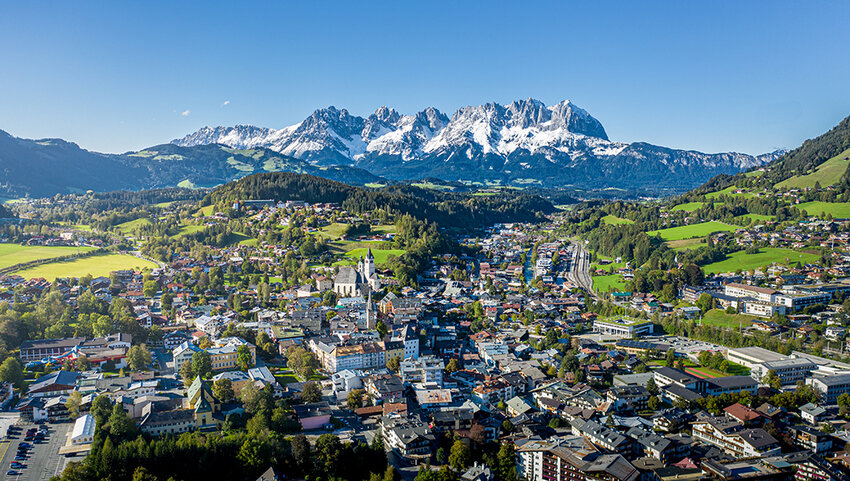
Kitzbühel was founded in the 13th century and is one of the most stunning mountain towns in the Austrian Tirol. History buffs should begin in the Kitzbühel Museum, where they can get a handle on the area’s mining, farming, and craftwork heritage. The town’s main street is lined with pavement cafés, but some of its most sought-after tables are situated up the mountain. Try the Hornköpflhütte, Hahnenkammstüberl or the terrace at the BichlAlm Berggasthof. Skiing has also played a massive part in the town’s development. The Hahnenkamm is a prestigious downhill race that’s been staged here since 1931. There’s a frisson of excitement in Kitzbühel as the world’s top skiers descend on the town to take on the fearsome Streif course.
Garmisch-Partenkirchen, Germany
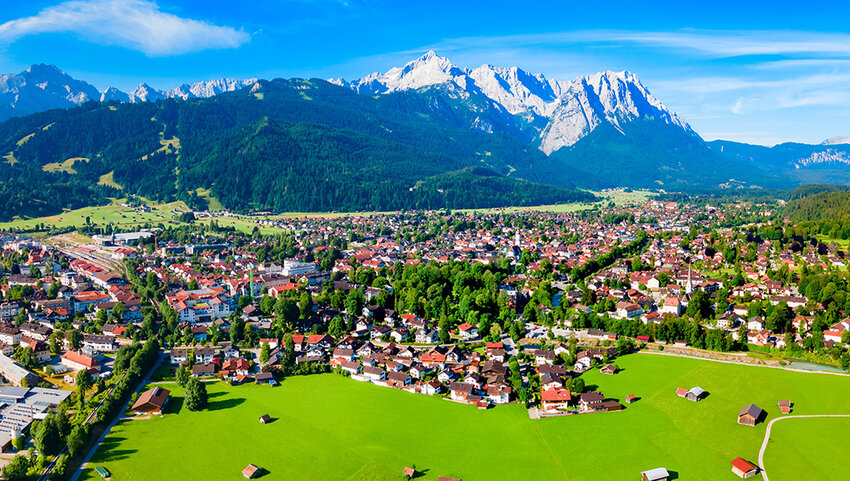
Garmisch and Partenkirchen were two separate entities until the 20th century, when they were amalgamated to host the 1936 Winter Olympic Games. The place sits within easy reach of the Zugspitze, Germany’s highest mountain. Like many Alpine villages in southern Bavaria, Garmisch-Partenkirchen boasts an abundance of wooden chalets with carved balconies which overflow with begonias and geraniums during the summer months. In winter, attention turns to their lüftlmalerei. These colorful folk murals adorn the historic buildings that line streets such as Ludwigstraße and depict everything from local businesses to religion and folklore tales.
Berat, Albania
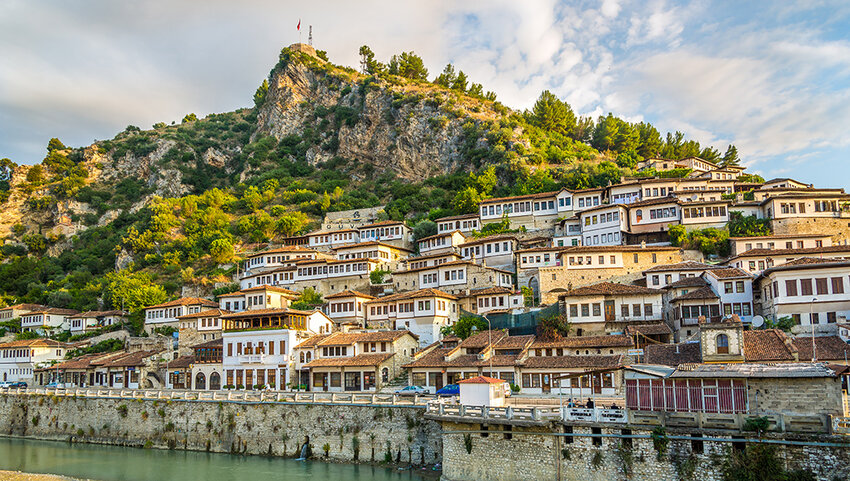
Whitewashed, Ottoman-style houses cling to the slopes of this Albanian riverside town. It’s obvious even to a transient visitor how it got its nickname, “the town of a thousand windows.” A citadel has perched atop the craggy mountain behind the town for around 2,500 years, though most of what you see now is from the 13th-century incarnation of this fortification. Follow a cobblestone path uphill to explore within its walls where you’ll find the Red Mosque, a slew of historic churches that were spared during Enver Hoxha’s destructive regime, and a bunch of stone houses that are still private residences.
Reine, Norway
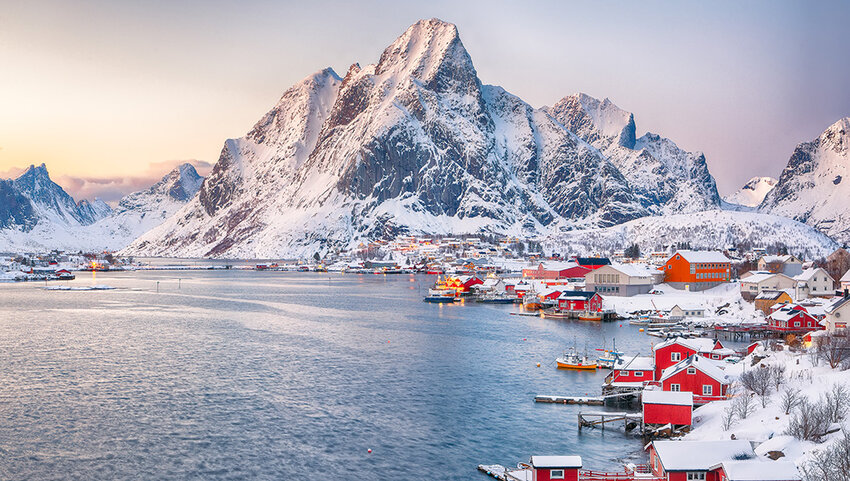
Reine is a jewel in Norway’s Lofoten Islands. Cod and stockfish have been traded here since the 18th century. Russet red rorbuer line a sheltered bay. Once, they provided refuge from the weather for the area’s fishermen but these days many have been converted into cosy rentals. In summer, you’ll often see people kayaking or stand up paddle boarding on the fjord. Across the water, the 1470-foot-tall Reinebringen is both a popular summer hike and a dramatic backdrop. Steps have been cut into the mountainside for walkers to access the summit more easily; from the top, the view over Reine and the Arctic Ocean beyond is extraordinary. As fall turns to winter and the nights draw in, Reine is one of the most scenic spots in the archipelago from which to view the northern lights.
Zermatt, Switzerland
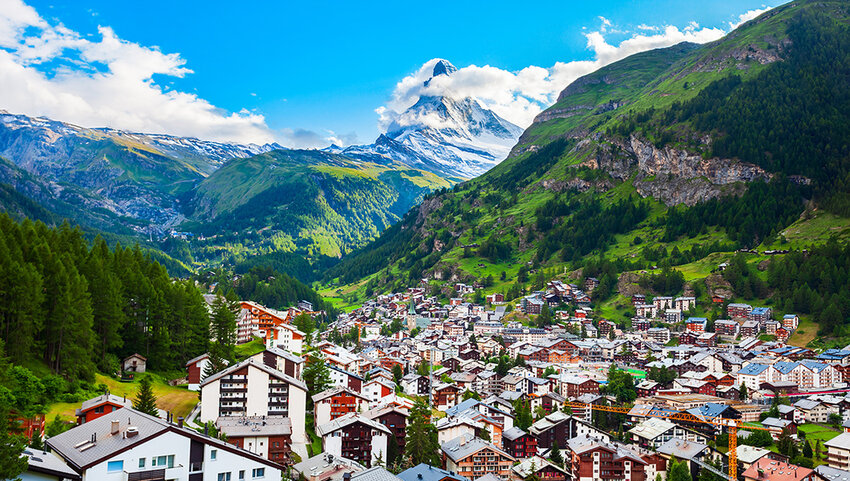
Swiss mountain towns don’t get better than this. Once an agricultural hamlet, Zermatt found itself on the map in the 19th century after the first ascent of the nearby Matterhorn, and has since grown into the glitzy resort town it is today. Backdrops don’t get much more iconic than this: until very recently, this was the mountain that featured on the Toblerone chocolate bar packaging. Zermatt’s car-free status certainly helps it retain its magic. As you wander past pretty Alpine chalets to bakeries, cafés, and restaurants – food’s a big deal here – you’ll appreciate the strict planning laws that have enabled the place to preserve its classic appearance.
La Clusaz, France
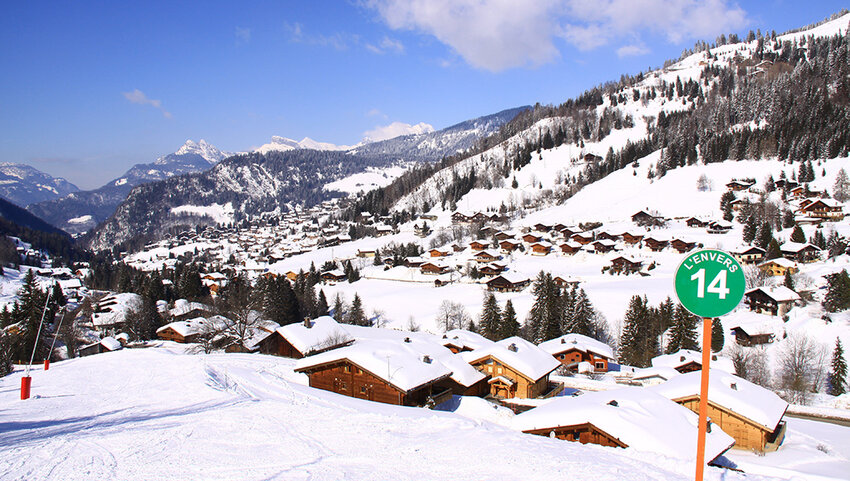
Picture-perfect La Clusaz is one of the gems of the Haute Savoie region of France. Its location is one of its major strengths. Set at the heart of the gorgeous Massif des Aravis, La Clusaz is less than 20 miles from the delightful lakeside town of Annecy and can be reached in under an hour from Geneva. Little wonder it has a Swiss air about it. La Clusaz has a rustic vibe, centered on a marketplace dominated by the 18th century stone belltower of the Église Sainte-Foy de La Clusaz. Streets lined with timber chalets with balconies and shuttered windows radiate out in every direction. While some French ski towns have prioritized functionality over beauty, this place has fought and succeeded in retaining its traditional ambience.
Mestia, Georgia
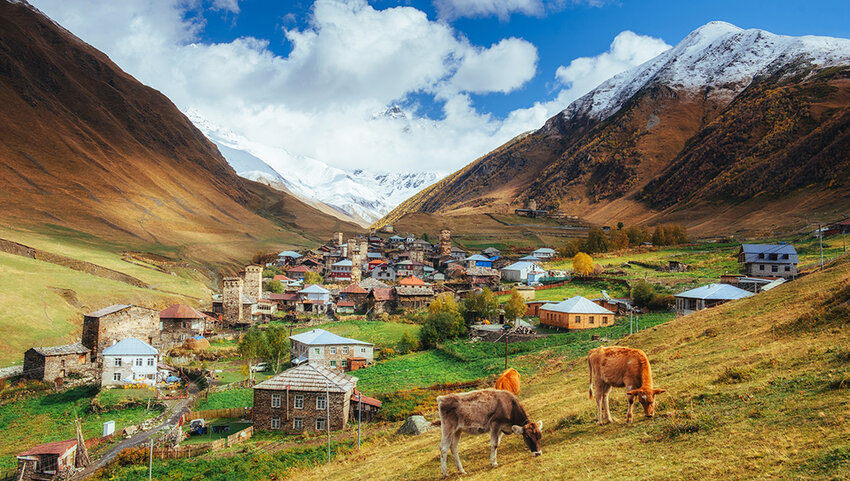
Georgia sits right on the fringes of Europe and its once-remote Svaneti region has something of a reputation for being wild. The snow-capped peaks of the Greater Caucasus mountains rise behind the town of Mestia. Modern-day development is beginning to change the place – not least as modern aparthotels spring up along its main street. Yet you’re just as likely to see a cow ambling along the sidewalk as you are a taxi offloading its passengers. That’s not the only thing that adds to its appeal. Littered throughout the backstreets are the stone towers that were once a vital part of Mestia’s defenses. Townsfolk would have lived on the upper floors of these narrow, basic dwellings while livestock were kept at ground level.





